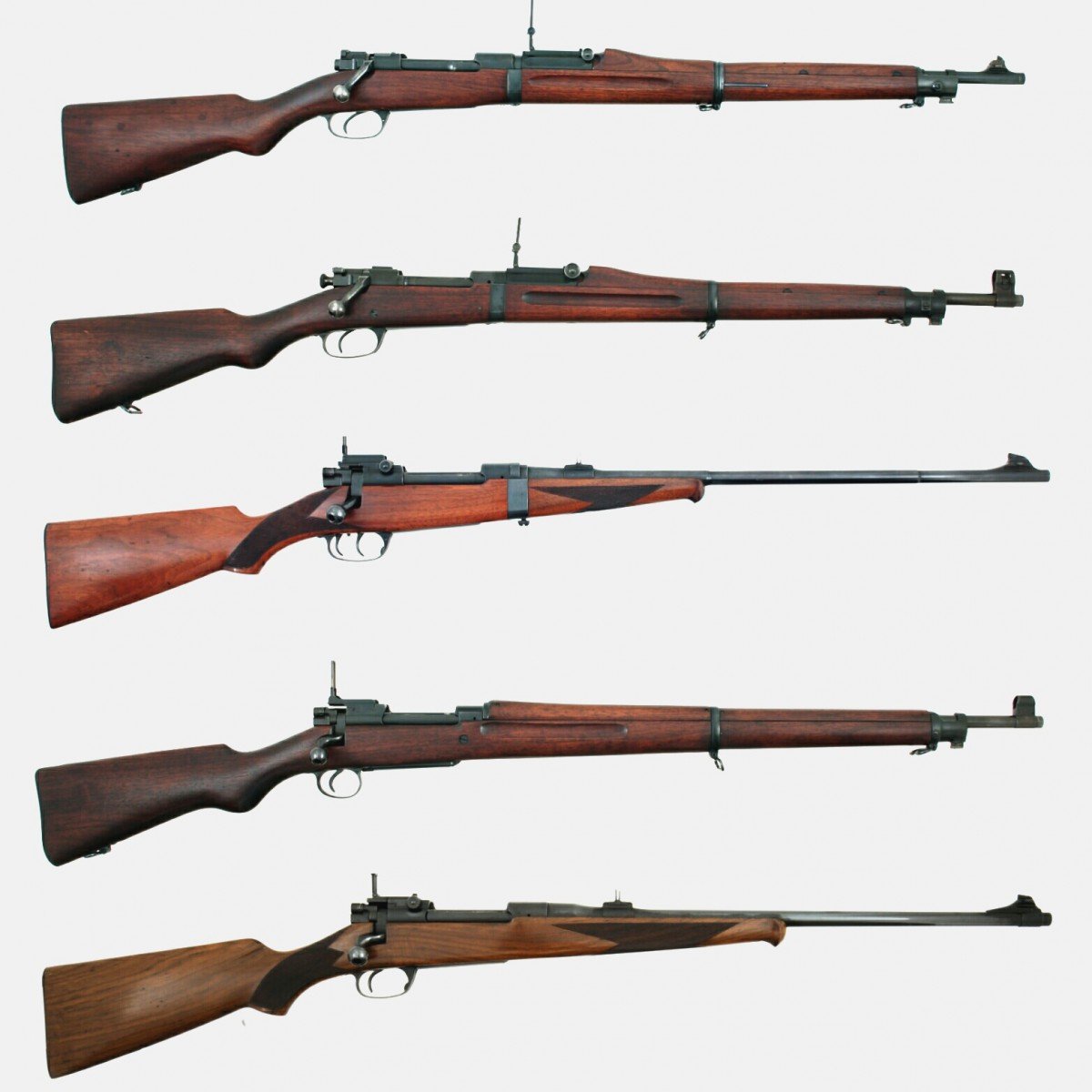Bethyl Burton Rifle-  . The Bethyl Burton Rifle is an English double magazine bolt action repeating experimental rifle designed by Bethel Burton between 1882 and 1886. It was submitted to the English War Office for evaluation and testing, but none of these rifles were accepted by the English military. The rifle’s concept is considered by many to be the first true bolt action rifle used by the US military, and it was far ahead of its time. Bethel Burton, the designer, was a prolific inventor who previously offered an advanced bolt-action, percussion-fired musket to the Commonwealth of Virginia at the beginning of the Civil Wa
. The Bethyl Burton Rifle is an English double magazine bolt action repeating experimental rifle designed by Bethel Burton between 1882 and 1886. It was submitted to the English War Office for evaluation and testing, but none of these rifles were accepted by the English military. The rifle’s concept is considered by many to be the first true bolt action rifle used by the US military, and it was far ahead of its time. Bethel Burton, the designer, was a prolific inventor who previously offered an advanced bolt-action, percussion-fired musket to the Commonwealth of Virginia at the beginning of the Civil Wa  The Model 1871 Ward-Burton was an early experimental rifle trialled by the US military in its search for a new breechloading rifle to replace the theoretically-interim Allin conversion that made muzzle-loading rifles into Trapdoor Springfields. It was made in 1871 at the Springfield Armory and was rejected after trials in favor of the trapdoor system. The Ward-Burton rifle was a single-shot design with a bolt that locked into corresponding threads machined into the inside of the receiver.
The Model 1871 Ward-Burton was an early experimental rifle trialled by the US military in its search for a new breechloading rifle to replace the theoretically-interim Allin conversion that made muzzle-loading rifles into Trapdoor Springfields. It was made in 1871 at the Springfield Armory and was rejected after trials in favor of the trapdoor system. The Ward-Burton rifle was a single-shot design with a bolt that locked into corresponding threads machined into the inside of the receiver.  Unique Experimental Prototype German Mauser Bolt Action Rifle This unique Mauser prototype rifle shares resemblance to the Mauser 71/84 Gewehr, with an internal tube magazine, but has differences in the construction of the receiver and some visual similarities to the Model 1888 Commission Gewehr. The gun certainly appears to be factory quality, and is the only example like it known by this writer. No receiver, barrel, rear sight or stock markings visible (never appears to have been marked), with small Imperial German crown proofs on some small components, and chambered for use with an unknown 8mm centerfire cartridge, with an outer barrel jacket. Duffel cut stock, indicating this was likely a bringback.
Unique Experimental Prototype German Mauser Bolt Action Rifle This unique Mauser prototype rifle shares resemblance to the Mauser 71/84 Gewehr, with an internal tube magazine, but has differences in the construction of the receiver and some visual similarities to the Model 1888 Commission Gewehr. The gun certainly appears to be factory quality, and is the only example like it known by this writer. No receiver, barrel, rear sight or stock markings visible (never appears to have been marked), with small Imperial German crown proofs on some small components, and chambered for use with an unknown 8mm centerfire cartridge, with an outer barrel jacket. Duffel cut stock, indicating this was likely a bringback.  T.C. Johnson’s Bolt Action Experiments - Buffalo Bill Center of the West [
T.C. Johnson’s Bolt Action Experiments - Buffalo Bill Center of the West [
The most obvious difference between this rifle and a standard Remington-Keene is the “disc magazine” ahead of the loading port that aids in loading protective disks between the cartridges to prevent accidental discharge of cartridges within the tube magazine under the barrel. Ammunition in tubular magazines reportedly occasionally went off when bullets struck the primer of the cartridges ahead of them due to recoil or drops, particularly if the cartridges had rather sensitive primers. The discs are manually fed between cartridges using a plunger that operates essentially the same as the manual ejectors on many revolvers. The outer body of the magazine turns to the right to lock the plunger in the rear. When the rifle is being operated, the device returns the disks to the “magazine” for future use using the modified lifter. One of these disks is included. These concerns were largely alleviated by the more widespread adoption of box magazines fed rifles like the contemporary Remington-Lee, but tubular magazines were then very popular for repeating rifles and had been since their introduction. An included letter from collector R. Bruce McDowell in 1988 explains the operation and indicates he purchased it “at the Forks of the Delaware Antique Arms Collectors show in Allentown, Pennsylvania, from an old time collector who is not liquidating his entire collection. I was told by him that this particular gun came from the Remington Arms Co. museum and was sold at the time they liquidated a good part of their pieces. Another party told me that he saw such a gun in the Remington museum, but when I contacted the Remington people, they could tell me nothing.” Another interesting difference is that this rifle cocks upon closing the bolt whereas a standard Remington-Keene must be manually cocked. The magazine cut-off was removed/never installed. It also has no sights and appears to have always remained “in-the-white.” However, it does have two tapped holes for a rear sight. The bolt has the standard three-line address and patent marking. Sling swivels are fitted to the forend cap and butt.







 Extremely Rare 1941 Dated German Mauser G40K Experimental/Prototype Bolt Action Carbine
Extremely Rare 1941 Dated German Mauser G40K Experimental/Prototype Bolt Action Carbine


 de Martino-system repeating gun
de Martino-system repeating gun  .
.  BLAKE ROTARY MAGAZINE RIFLE
BLAKE ROTARY MAGAZINE RIFLE 



